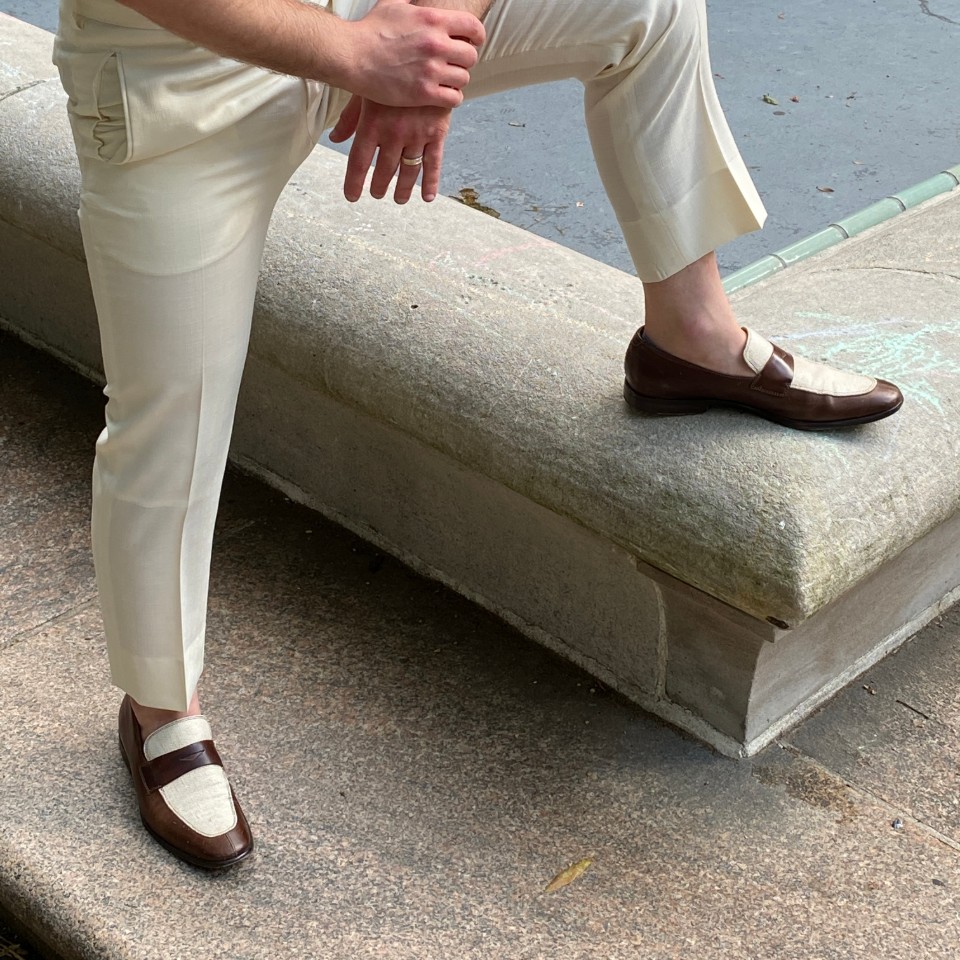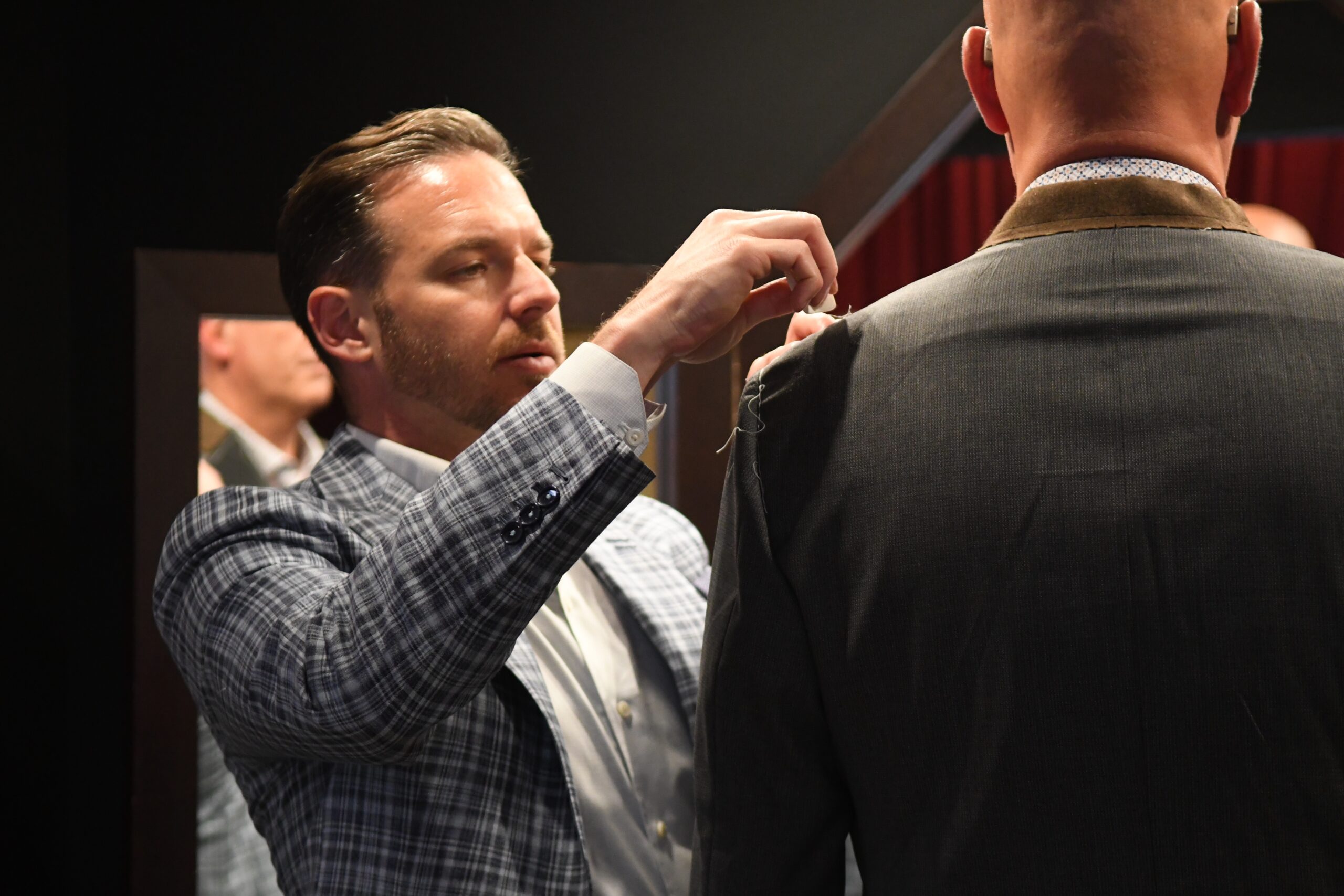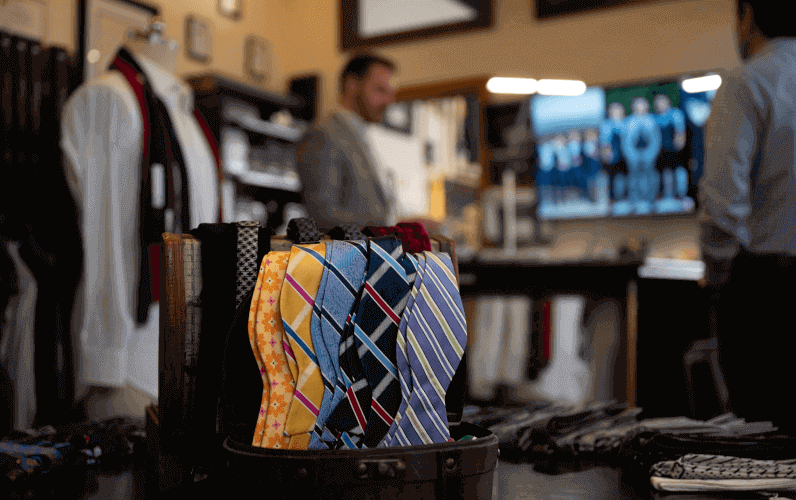Welcome to Henry A. Davidsen’s “Elements of a Suit” series. This post’s focus is on jackets, but if you’d like to read about the other components of a custom or made-to-measure suit, click any of the links below:
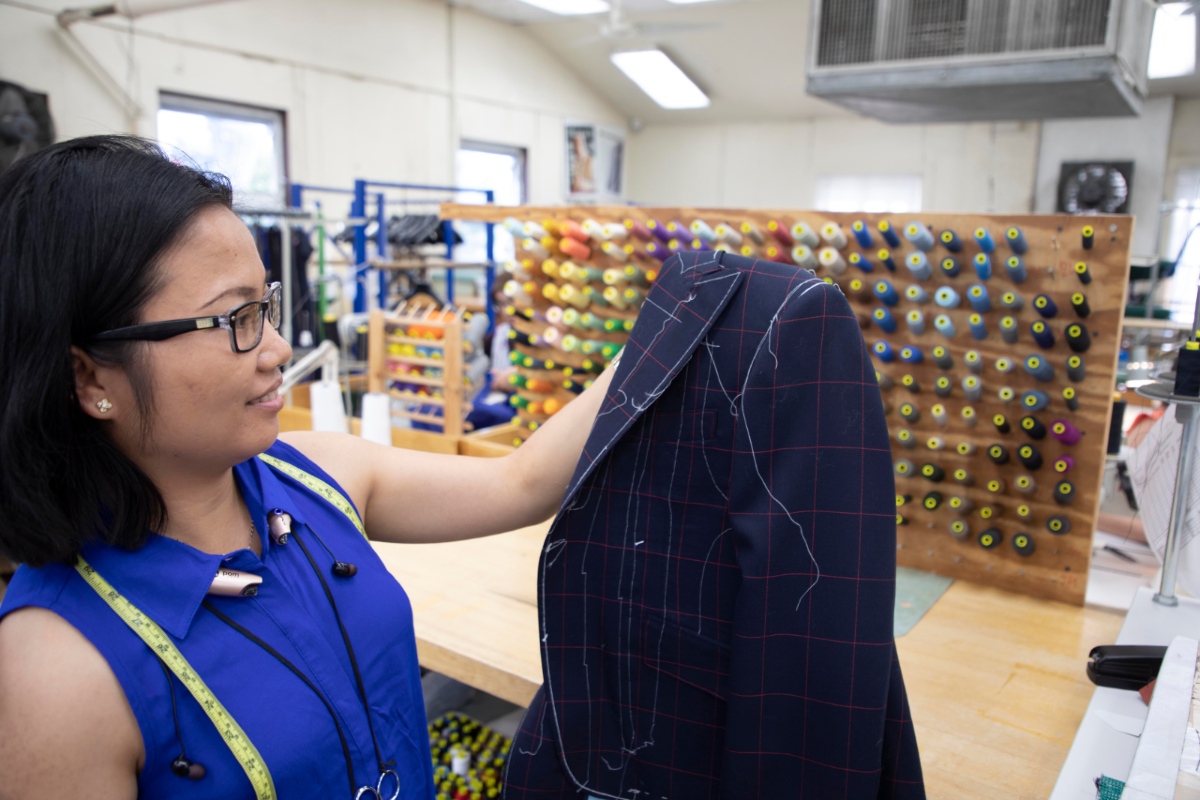 Before we dive in, let’s do a little housekeeping to get on the same page. Though we’ll use the term “suit” and “suit jacket” throughout this article, our design options apply to any tailored garment. As we mentioned in our custom shirt series, we can achieve any design element you see in these articles, and more. If you have a vision that we can help you realize, contact us to start the conversation.
Before we dive in, let’s do a little housekeeping to get on the same page. Though we’ll use the term “suit” and “suit jacket” throughout this article, our design options apply to any tailored garment. As we mentioned in our custom shirt series, we can achieve any design element you see in these articles, and more. If you have a vision that we can help you realize, contact us to start the conversation.
Though you can hypothetically put any detail on any garment, some are better suited (pardon the pun) to sport coats or tuxedos instead of suits. For ease of reading, we created separate sections for each.
Lastly, you’ll notice that we don’t discuss fabric. Not only is fabric a multi-faceted discussion, but we already hinted at it in a suit fabric post, which we invite you to peruse at your leisure.
Designing a Custom Suit Jacket
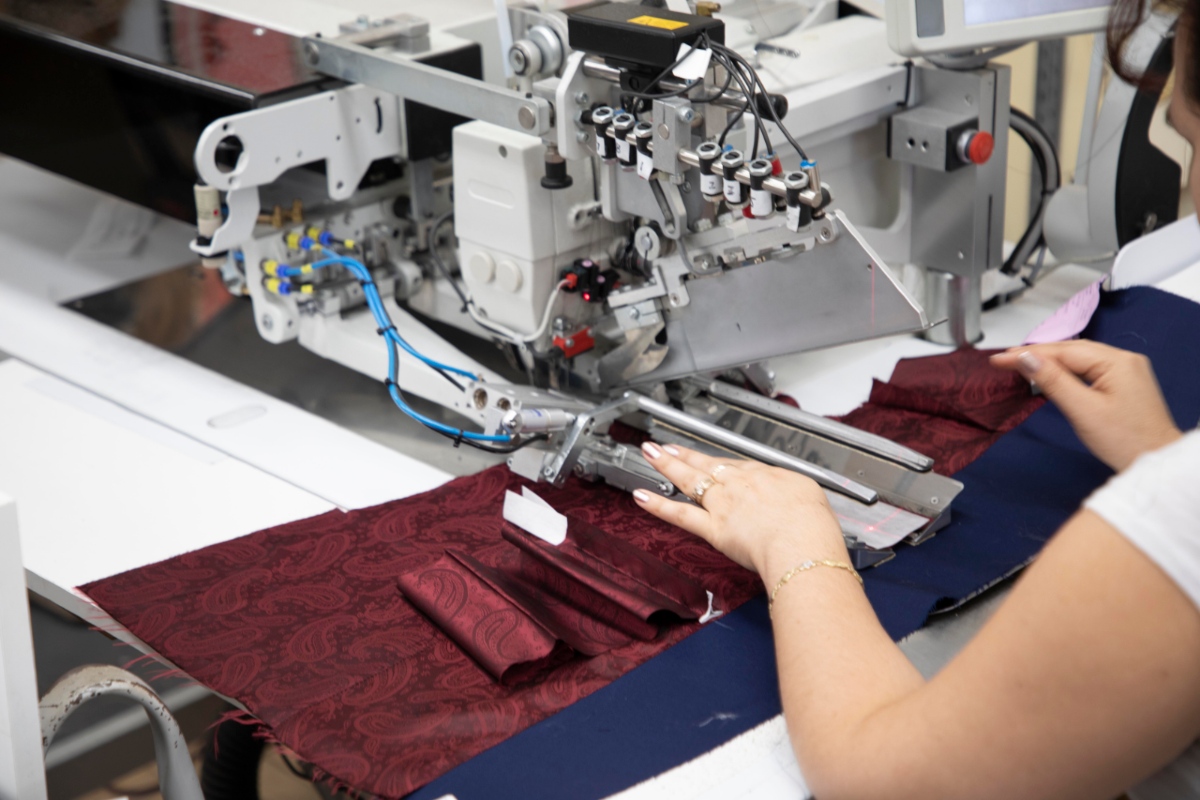 Buying a custom coat is a very different experience from making an off-the-rack purchase. Ready-to-wear manufacturers have made all the design decisions months and months before you ever see a garment in a store.
Buying a custom coat is a very different experience from making an off-the-rack purchase. Ready-to-wear manufacturers have made all the design decisions months and months before you ever see a garment in a store.
While it can be tempting to opt for a “grab-and-go” option, there are downsides. Even putting the ever-crucial subject of superior custom fit aside, these designers don’t know you. Your taste, personality, and professional needs weren’t accounted for during the design stage. How are you supposed to build your wardrobe with such little input on the process?
Below are some – but not all- of the design elements we discuss during your client consultation at Henry A. Davidsen.
Coat Style
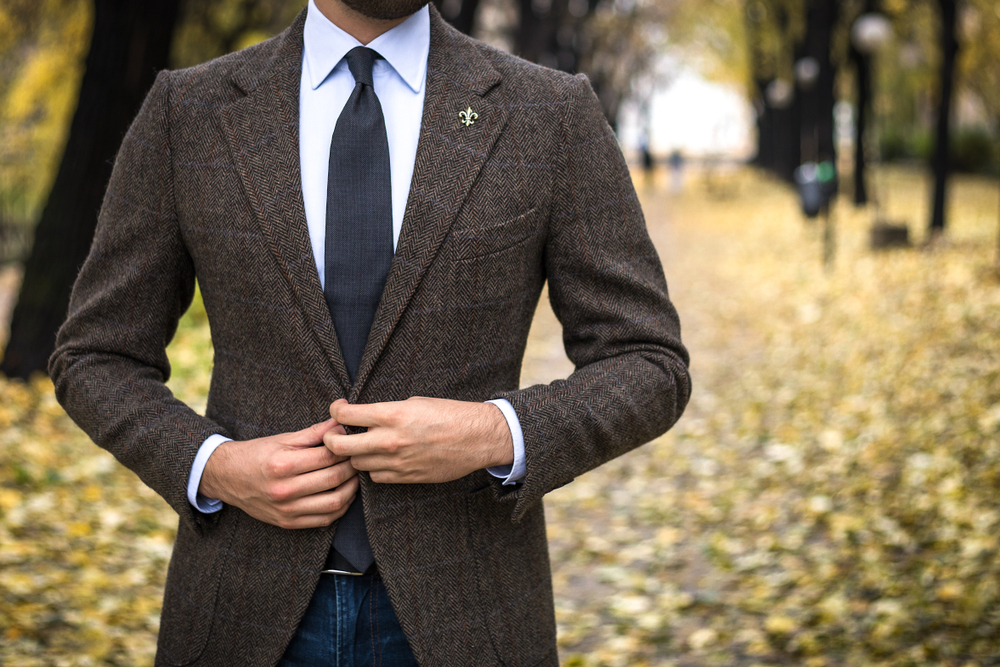 The first decision to make is on the jacket’s style: will it be single- or double-breasted, and how many front buttons do you prefer?
The first decision to make is on the jacket’s style: will it be single- or double-breasted, and how many front buttons do you prefer?
We offer single-breasted jackets with one, two, three, or even four buttons, though we tend to advise against four-button jackets even for very tall men. The vast majority of suit jackets and sport coats we make are two-button single-breasted models, and most of our tuxedo and smoking jackets are one-button single-breasted numbers.

Every once in awhile, we’ll make a 3×2 (read as “three roll to two”) jacket. This is a three-button jacket whose lapel rolls to the middle button instead of the top one, causing the top button to roll into the lapel creating a unique look.
When we make double-breasted (commonly shortened to DB) suit jackets, we tend towards a “6×2” model (read as “six on two”): six total front buttons, two of which are functional. We, of course, offer other DB models – 4×1, 4×2, 6×1, and more – but the 6×2 is dominant for us at the shop.
Deciding the Best Coat Model For You
How do you determine which style is best for you? Personal preference plays a role, as does considering the type of garment you’re making. A perfect example of this is a single-breasted tux jacket, which should always be a one-button model.
Though we typically advise against trendiness, keeping current trends in mind can influence this decision. The two-button single-breasted jacket has been de rigueur for a good ten years, and most of our clients tend to select this option. Ultimately, your personal preferences, body type and shape, and audience for whom the suit will be worn in front of should be the main considerations behind the design you choose.
Buttons
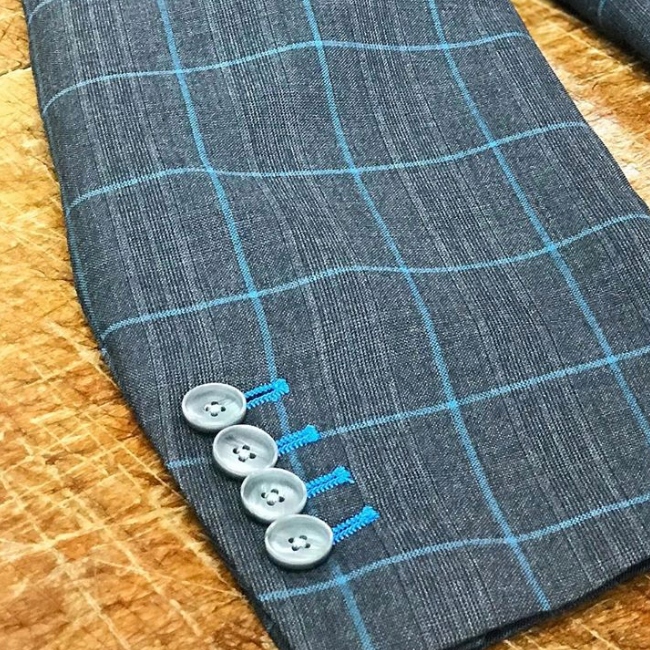 Your jacket’s buttons are physically small, but they have a large impact on its presentation. Color is the first consideration to make, and most men opt for buttons that match their suits – navy buttons with navy cloth, grey buttons with grey cloth, and so on. Sport jacket cloth often has upwards of three colors at once, so it’s common to pick a button whose color pulls out a minor color in the coat.
Your jacket’s buttons are physically small, but they have a large impact on its presentation. Color is the first consideration to make, and most men opt for buttons that match their suits – navy buttons with navy cloth, grey buttons with grey cloth, and so on. Sport jacket cloth often has upwards of three colors at once, so it’s common to pick a button whose color pulls out a minor color in the coat.
Lining
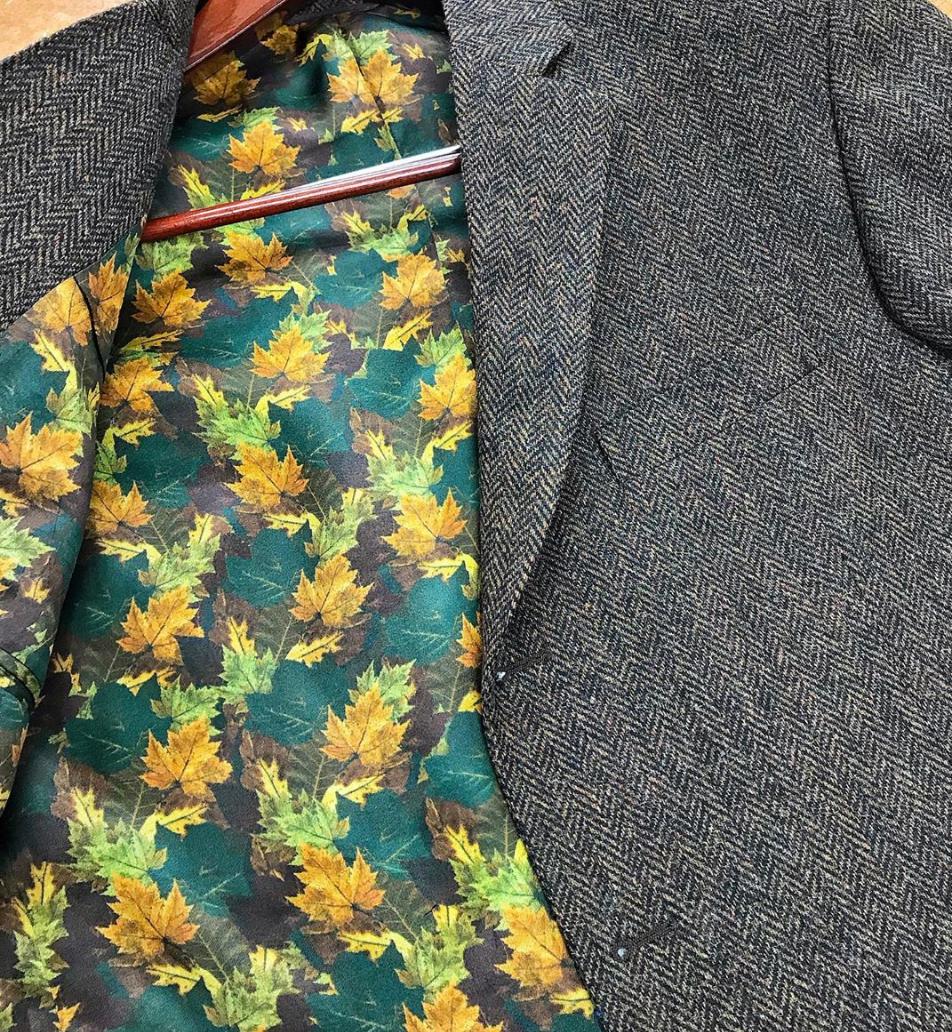 If there’s one place on a jacket that’s all personality, it’s the lining. Because it doesn’t affect your first impression, your lining can be as bold – or not – as you please.
If there’s one place on a jacket that’s all personality, it’s the lining. Because it doesn’t affect your first impression, your lining can be as bold – or not – as you please.
It’s typical to match the color of your lining to that of the jacket, but we’re happy that our clients tend to go for a bit more than that. Lots of men love paisley linings, and there’s much more than that too: dots, stripes, houndstooth, and other standard menswear designs. We also offer hundreds of special interest linings, and can even make custom linings out of your own photos.
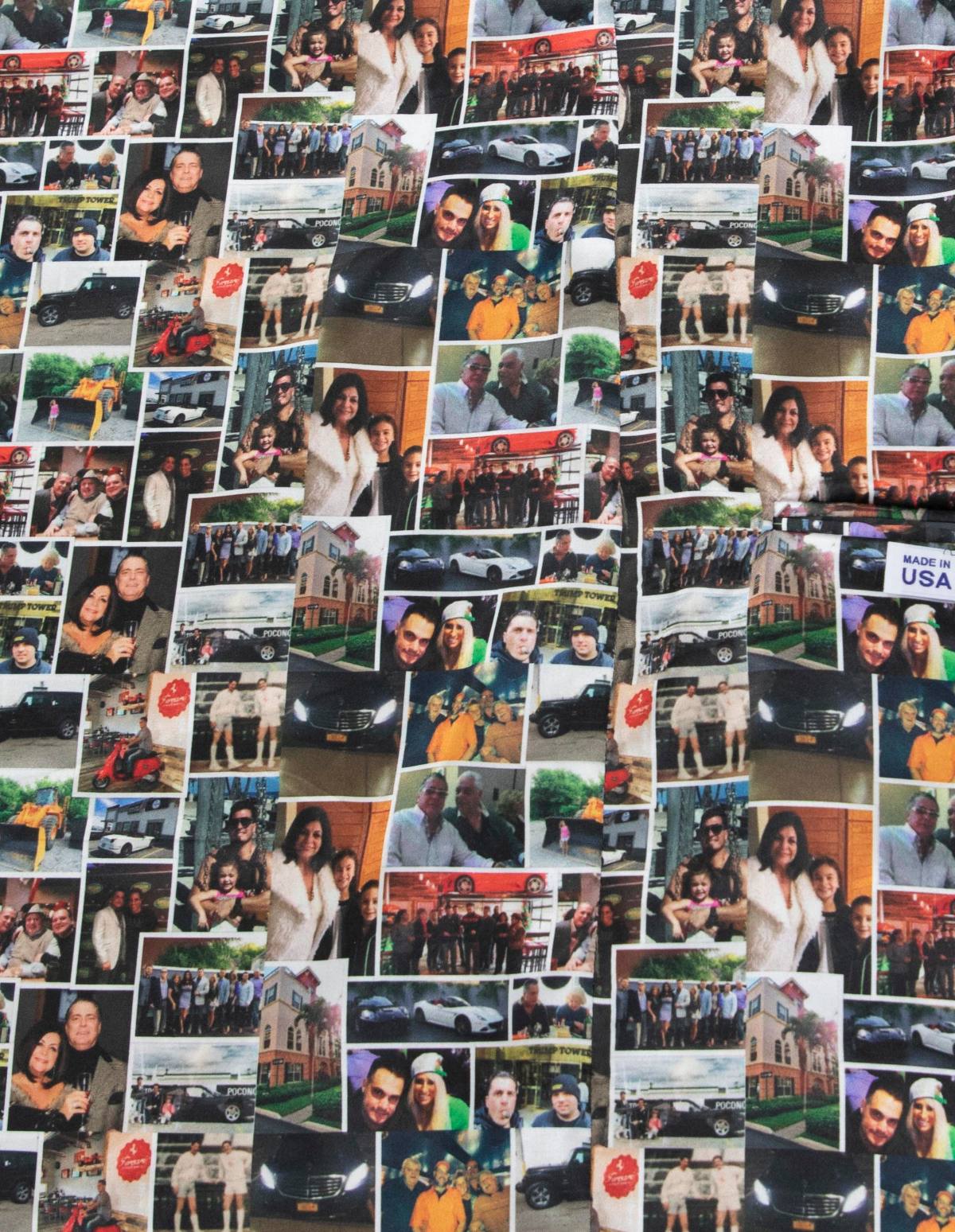
“Full” linings that cover the entirety of the jacket’s insides are standard. you can also make a custom jacket with a half lining, a 1/8 lining, or even a French facing. These options remove incrementally more and more lining, making the jacket lighter and increasing its breathability.
Pockets
Custom jacket pockets are divided into two categories: upper and lower.
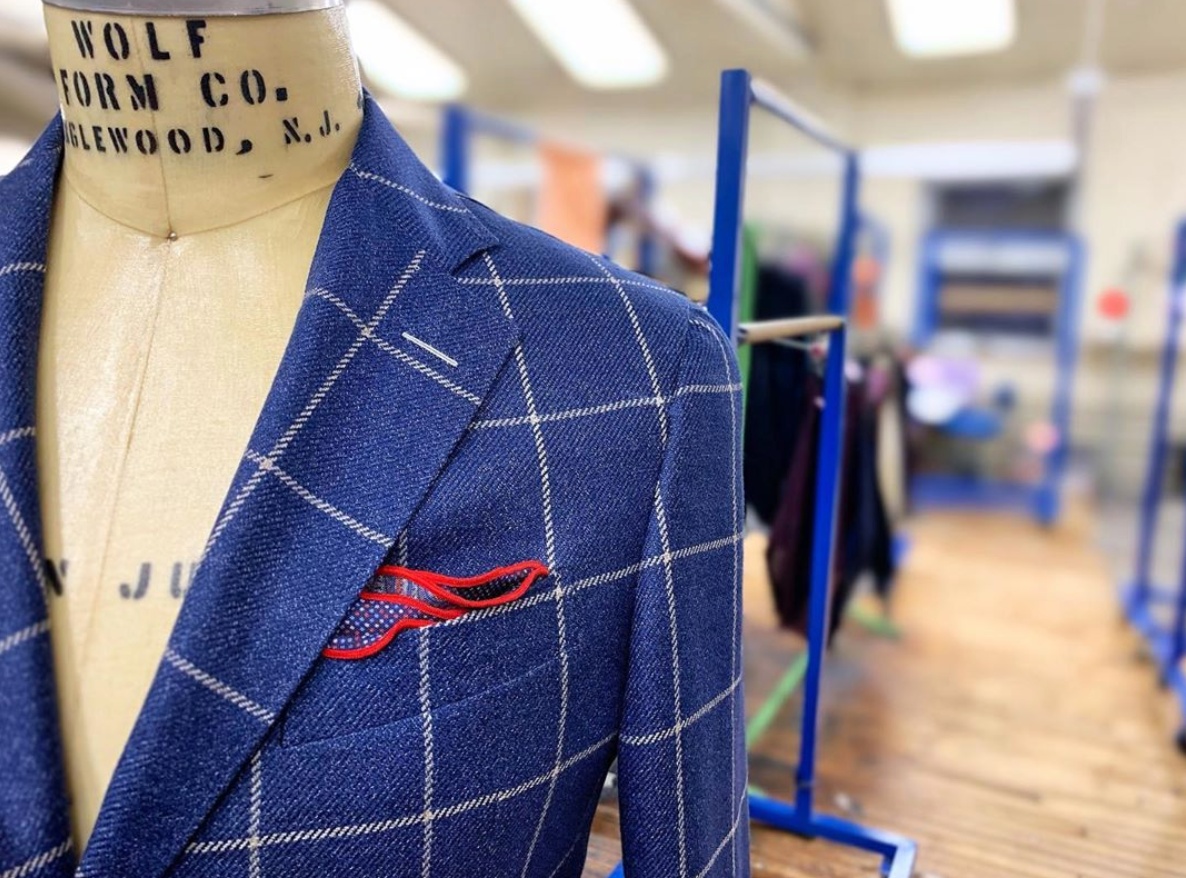 Upper pockets refer to breast pockets. Every jacket has one, the standard being a welt pocket, which you’ve seen on almost every coat ever. We also make curved welt pockets and patch breast pockets, the latter of which is best for casual jackets.
Upper pockets refer to breast pockets. Every jacket has one, the standard being a welt pocket, which you’ve seen on almost every coat ever. We also make curved welt pockets and patch breast pockets, the latter of which is best for casual jackets.
Lower pockets refer to those in the jacket’s waist area. You typically see two straight across with a flap. We can slant these pockets, add ticket pockets, make them patch pockets, and remove or add flaps to create the look you prefer.
Lapel
Lapels are offered in three styles: notch, peak, and shawl (typically referred to as a “shawl collar”).
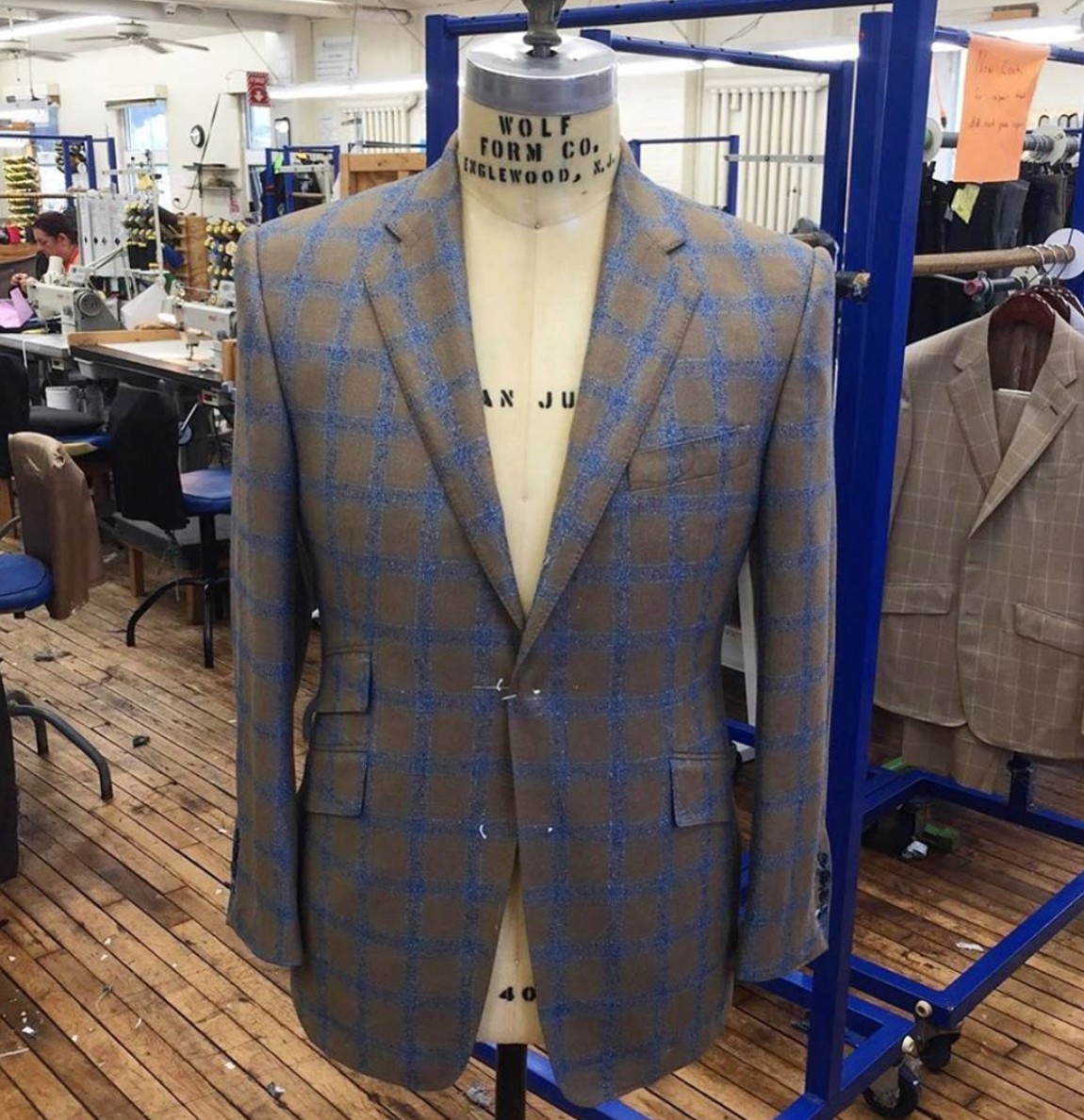
Most suits and sport coats are made with notch lapels, which makes for a perfectly versatile, handsome look. Peak lapels are typically found on tuxedo jackets, but we’ll also put them on sport jackets and suits if the client wants something with a bit more “sharpness” to it (literally and figuratively). A quick rule of thumb: double-breasted suits always have peak lapels.
Shawl collars are generally reserved for black tie coats – tuxes and smoking jackets. These collars have a distinctly Rat Pack-ish feel and we love making them for clients due to their uniqueness.
Lapel Width
Lapels narrow and widen and narrow again with each passing decade. The 1970’s saw 4+” wide lapels on everything, and the 2000’s gave us lapels as skinny as 1″. Given that you can pick your lapel width on custom jackets if you so choose, what are you supposed to do?
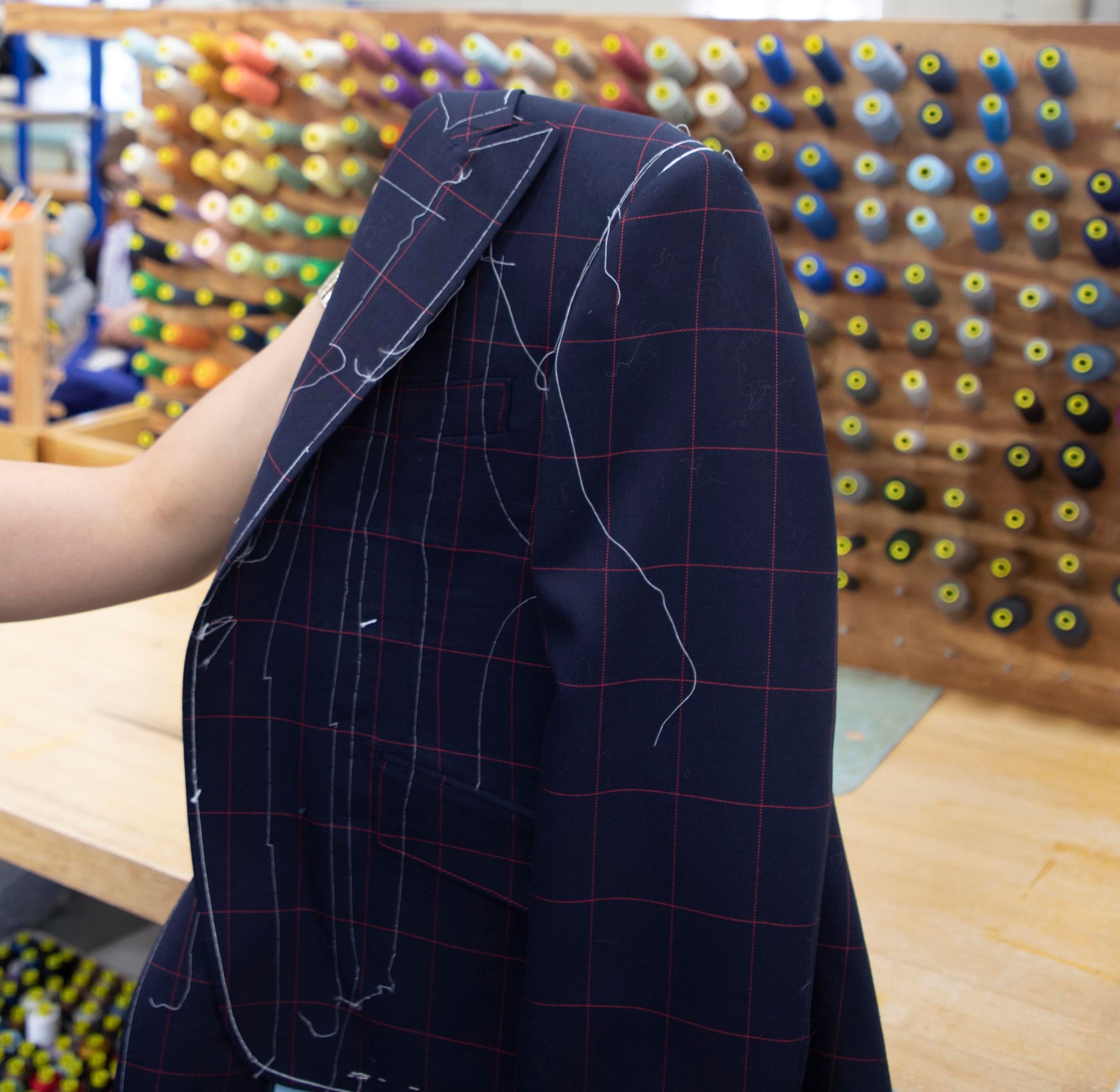
If you’re going for a permanently stylish garment (which we advise as often as possible), you want your lapel width to more or less bisect the distance between the “tie side” of the lapel and the shoulder seam. This tends to be around 3 3/8″ for an average-sized man falling in the 42″ to 44″ chest range.
Vents
Vents are the openings in the back of a jacket. There can be no vents, a single vent in the middle (a “center vent”), or one along each side (“side vents”).
We recommend side vents for the vast majority of men we work with. We find that these tend to flatter most bodies while providing maximum utility – you can put your hands in your pants pockets without exposing your rear end.
Center vents are a classic American business look or a classic British sport coat look, depending on what side of the pond you’re discussing this from. We recommend center vents for our most conservative clients or for men who are pear-shaped. Center vents are sympathetic to this body type, as side vents will usually pop open.
Ventless jackets are a very Italian look. Though they can be slimming, we tend to avoid these as they lack utility.
Stitching Colors
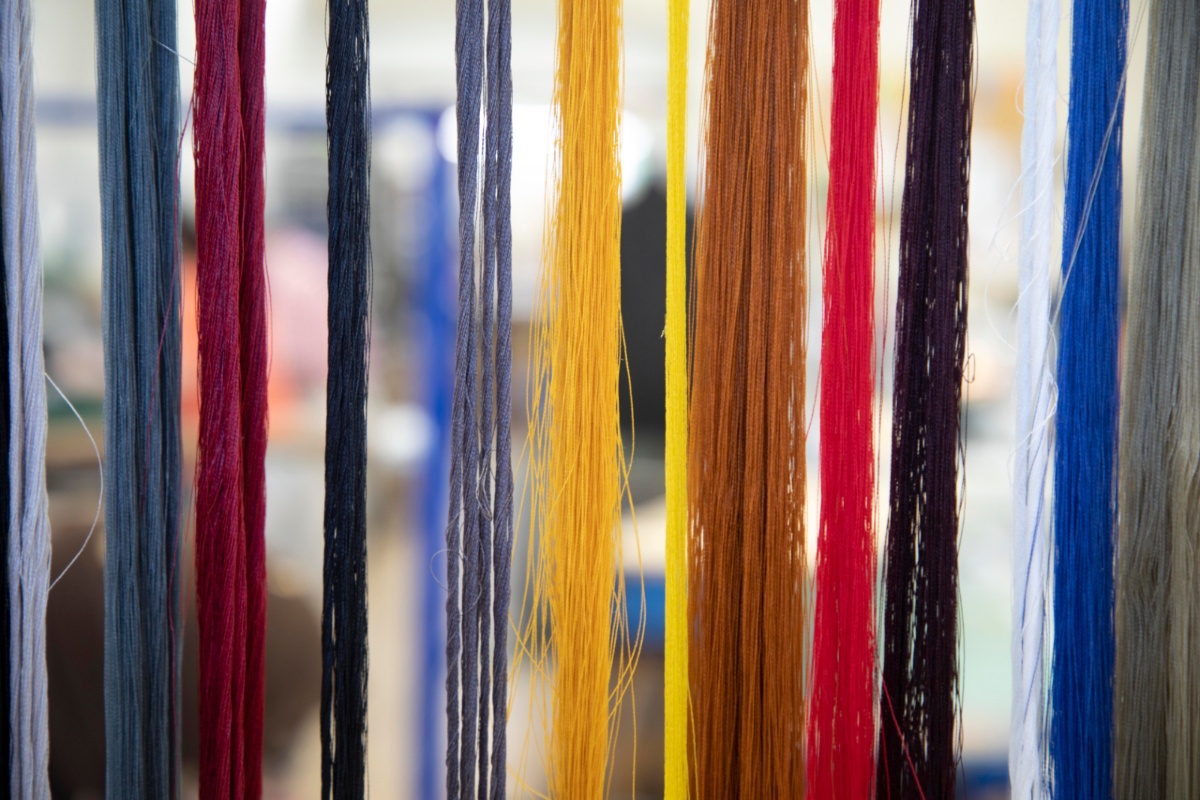 It’s typical for button and buttonhole thread colors to match the base color of your jacket. One way to customize a jacket, though, is to select a contrasting color thread for your lapel buttonhole and/or sleeve buttonholes, particularly the one closest to your hand.
It’s typical for button and buttonhole thread colors to match the base color of your jacket. One way to customize a jacket, though, is to select a contrasting color thread for your lapel buttonhole and/or sleeve buttonholes, particularly the one closest to your hand.
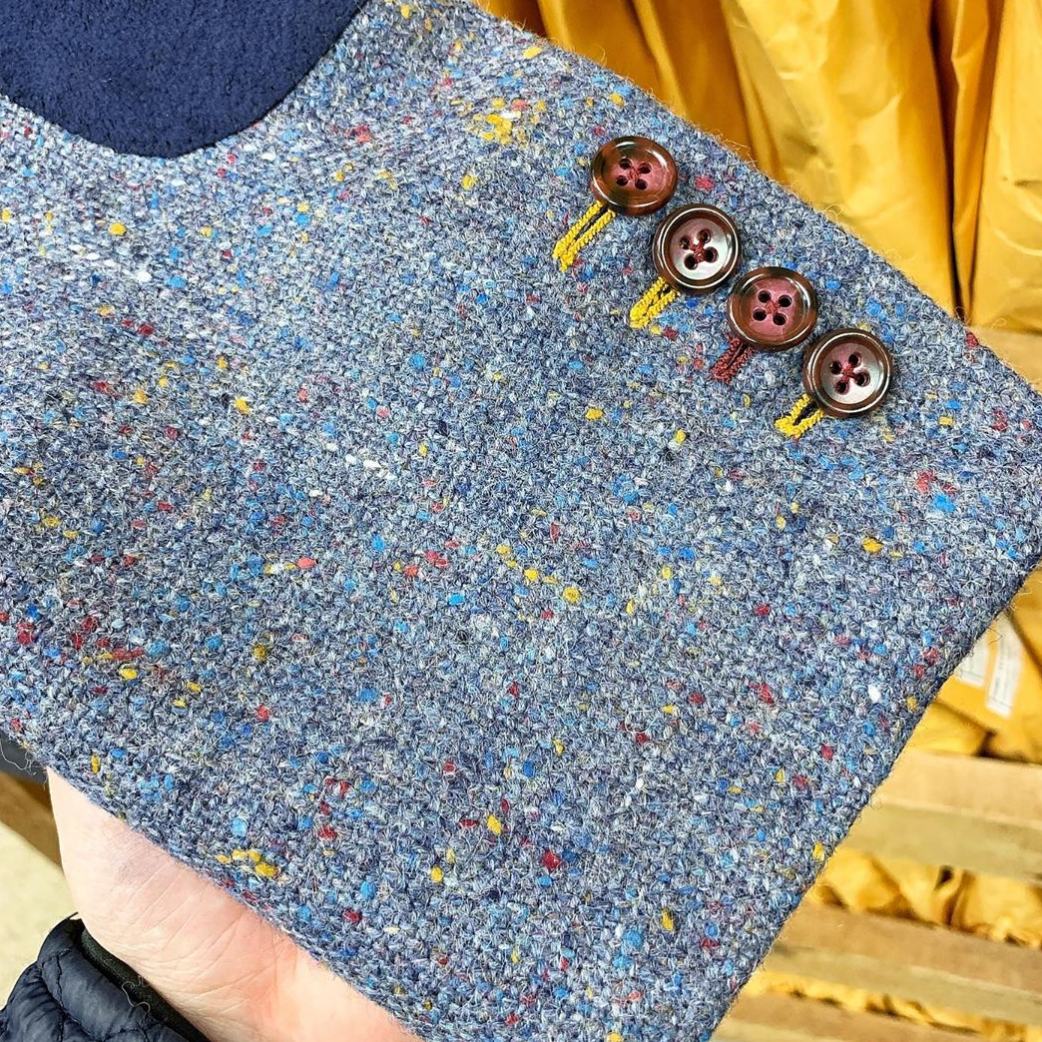 You wind up with a smart, coordinated, and unique look when you take a minor color from your jacket and make it the color of your sleeve buttonhole.
You wind up with a smart, coordinated, and unique look when you take a minor color from your jacket and make it the color of your sleeve buttonhole.
Name Label
Every jacket we make gets a personalized name label on the inside. Though not a “design” element in the pure aesthetic sense, it still serves to customize your garment and make it more special than something you’d find in a traditional retail store.
Most men will use their names. Others use their initials, or perhaps their wedding date. Some men will use nicknames or even witty little aphorisms. The choice is yours.
Custom Sport Jackets
Every detail listed above is available for our sport coats, but there are some that are so specific to them that it warrants its own section.
Throat Latches

Throat latches are little extensions of fabric found in the left gorge (where lapel and collar meet) and can be either attached or detachable. These allow the collar to be flipped up and buttoned around the neck in inclement weather, something that was very important while fox hunting in the British countryside so many years ago.
Their mere presence adds a unique element to your coat, and adding one in a contrasting color makes for a bold-but-smart look.
Elbow Patches
Elbow patches get a bad rap. Long associated with college professors and their perceived intellectual elitism, they simply represent another opportunity to play with color and texture. Coordinating them with a color in your base cloth is a good place to start.
Most elbow patches are made of suede or a similar material. The feel of suede fiber – referred to as its “nap” – syncs well with the nubby handle of tweed, so elbow patches are outstanding with lambswool, Harris tweed, and other woolens.
Custom Tuxedo Jacket Facings

One design element that makes a tux jacket, a tux jacket is the facing on the lapels. There are two decisions to make: what material and color facing, and where it will be placed.
The two most common materials for facings are satin and grosgrain, with satin being the more popular. Satin is smooth and shiny, while grosgrain is ribbed with less shine. The choice is strictly a personal preference.
In terms of color, you can match your jacket or choose something contrasting. Black is always safe. Most formalwear is black, so you’ll get an instant match. In the case of midnight blue, burgundy, bottle green, and other black-tie colors, black facings will provide some contrast, enhancing the boldness of the look.
Very dark colors look best with matching facings – black, deep midnight blue, dark charcoal, and even dark chocolate can be made up with matching facings.
Conclusion
There’s a lot of thought that goes into a custom jacket’s design, and we hope this article helps build a knowledge base for you. If you’re ready to start a conversation, reach out to us at info@henrydavidsen.com or by phone at 215-310-0219. Feel free to take a look at the other Elements of a Suit articles by clicking the links below:
